00:00
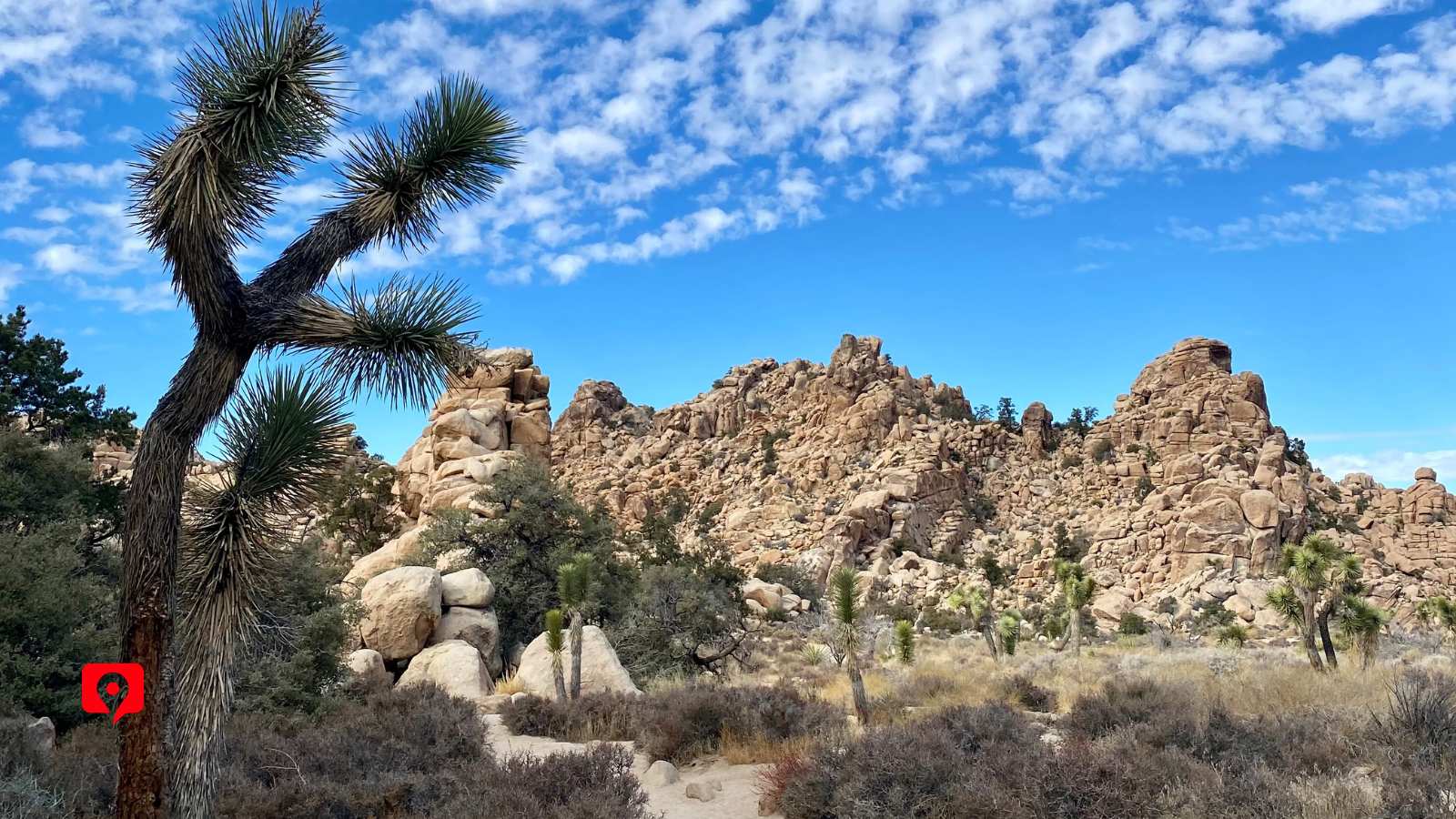
Hidden Valley Nature Trail immerses visitors in the serenity and splendor of Joshua Tree National Park. The trail, easily accessible and well-marked, guides you through a stunning landscape of rock formations and native plants. It’s an ideal spot for beginners and families to experience the park’s distinctive ecological features without venturing too far from comfort.
Start your walk by exploring the enclosed valley, which is rumored to have been a hideout for cattle rustlers. Its natural rock walls provide a dramatic backdrop and create a microenvironment rich with a variety of plant species. Along the way, interpretive signs offer insights into the area’s geology and history, enhancing the educational value of the hike.
The trail is also a great place for photography, with its iconic Joshua trees and vast rock formations providing ample opportunities for memorable shots.
Reaching the Hidden Valley Nature Trail in Joshua Tree National Park is straightforward, whether you’re flying in or driving from nearby cities.
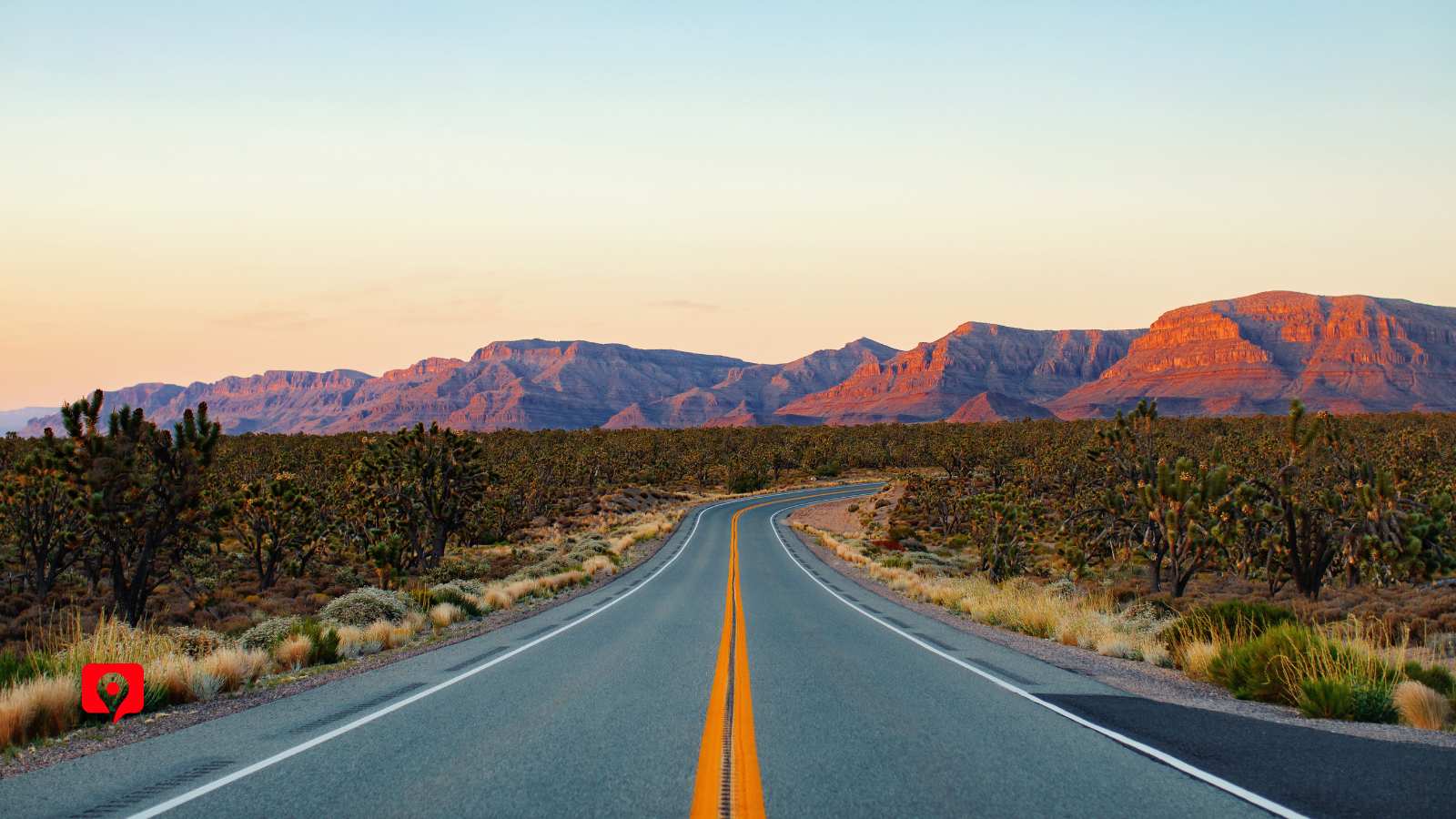
Los Angeles
Los Angeles International Airport (LAX), about 140 miles west of the park, offers numerous international and domestic flights. The drive from LAX to the park takes approximately three to four hours, depending on traffic.
San Diego
San Diego International Airport (SAN), approximately 160 miles away, provides another convenient option with a similar drive time.
Las Vegas
Harry Reid International Airport (LAS) in Las Vegas is about 180 miles northeast, with efficient routes through the Mojave National Preserve offering spectacular desert scenery.
Phoenix
Phoenix Sky Harbor International Airport (PHX) is slightly further, around 220 miles east, with a driving time of about 3.5 to four hours to the park’s south entrance.
Hidden Valley, located within Joshua Tree National Park, is accessible via major highways. From Los Angeles or Phoenix, take Interstate 10 to enter through the park’s southern entrance. Route 62 serves as a northern route accessible from the Mojave Desert and connects directly to towns like Joshua Tree and Twentynine Palms, which are near the north park entrances. Interstate 15 and 40 also provide access with a brief detour, making the park reachable within an hour from these routes.
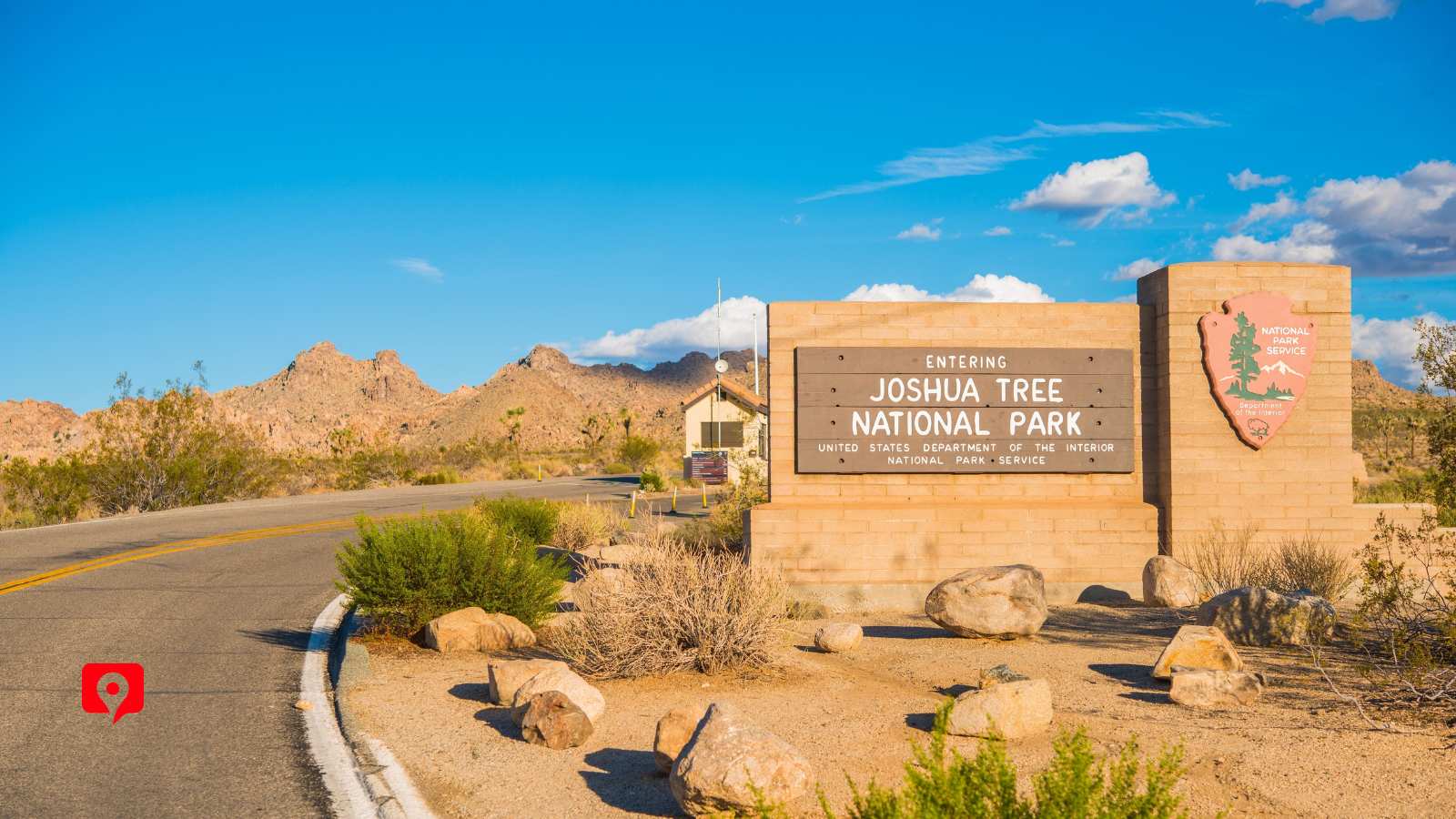
All park visitors are required to purchase a park pass to enter Joshua Tree National Park. Passes are valid for seven consecutive days and available for purchase at entrance stations and visitor centers, as well as online in advance.
Depending on the length of your stay and how many National Parks you plan to visit in a year, it may be more beneficial to purchase the America the Beautiful National Parks and Federal Recreational Lands Pass. This pass covers entrance fees into all U.S. National Parks as well as over 2,000 National Monuments, National Wildlife Refuges, National Historic Sites, and other federally managed lands.
Passes are free for current U.S. military members and reduced for Seniors aged 62 years or older. Senior passes also provide a 50 percent discount at select campgrounds.
Have Kids in the 4th Grade?
You and your family can get free access to hundreds of parks, lands, and waters for an entire year!
Campgrounds
Joshua Tree National Park has eight designated campgrounds, five of which are reservation only, and three of which are first-come, first-served. The park advises making reservations well in advance, as campsites are almost always full on weekends between October and May. Note that most campsites do not have water; you must bring your own. Some campsites operate at a limited capacity at the height of summer and due to the extreme heat, it is not recommended to camp here at this time.
Hotels
Joshua Tree has long been a desert getaway for Angelenos, and there are a variety of sleeping options, from chic boutique hotels in Palm Springs to spa resorts in Desert Hot Springs to the unplugged artsy charm of Joshua Tree and Twentynine Palms. Rates range from under $100 for the most basic chain motels to upwards of hundreds of dollars for luxury rooms and rental homes. Generally speaking, Palm Springs is a resort town, with plenty of accommodation and restaurant options, in addition to some good sights, while Joshua Tree and Twentynine Palms are better for a low-key, off-the-grid experience. For example, if you want to sleep in a vintage Airstream or something similarly unique, then Joshua Tree is your spot.
The optimal times to visit are during the spring (March to May) and fall (October and November), when the weather is pleasantly mild, making outdoor activities enjoyable. Spring, while being the busiest period in terms of visitation, bursts into life with blooming flora, attracting numerous visitors.
Fall, on the other hand, is considered ideal for hiking, offering cooler temperatures and vibrant autumnal colors, making it a hiker’s paradise. Winter presents its own charm with daytime temperatures hovering in the 50s and nights that can reach freezing points, offering a stark, serene beauty.
Summer months (June to September), though, tend to be less favorable for extended outdoor activities as daytime temperatures often exceed 100 degrees Fahrenheit, making it challenging to enjoy the park without the refuge of air conditioning. Additionally, to avoid the crowds, consider visiting on weekdays. Weekends tend to draw large numbers of visitors, especially locals on day trips, crowding the popular spots.
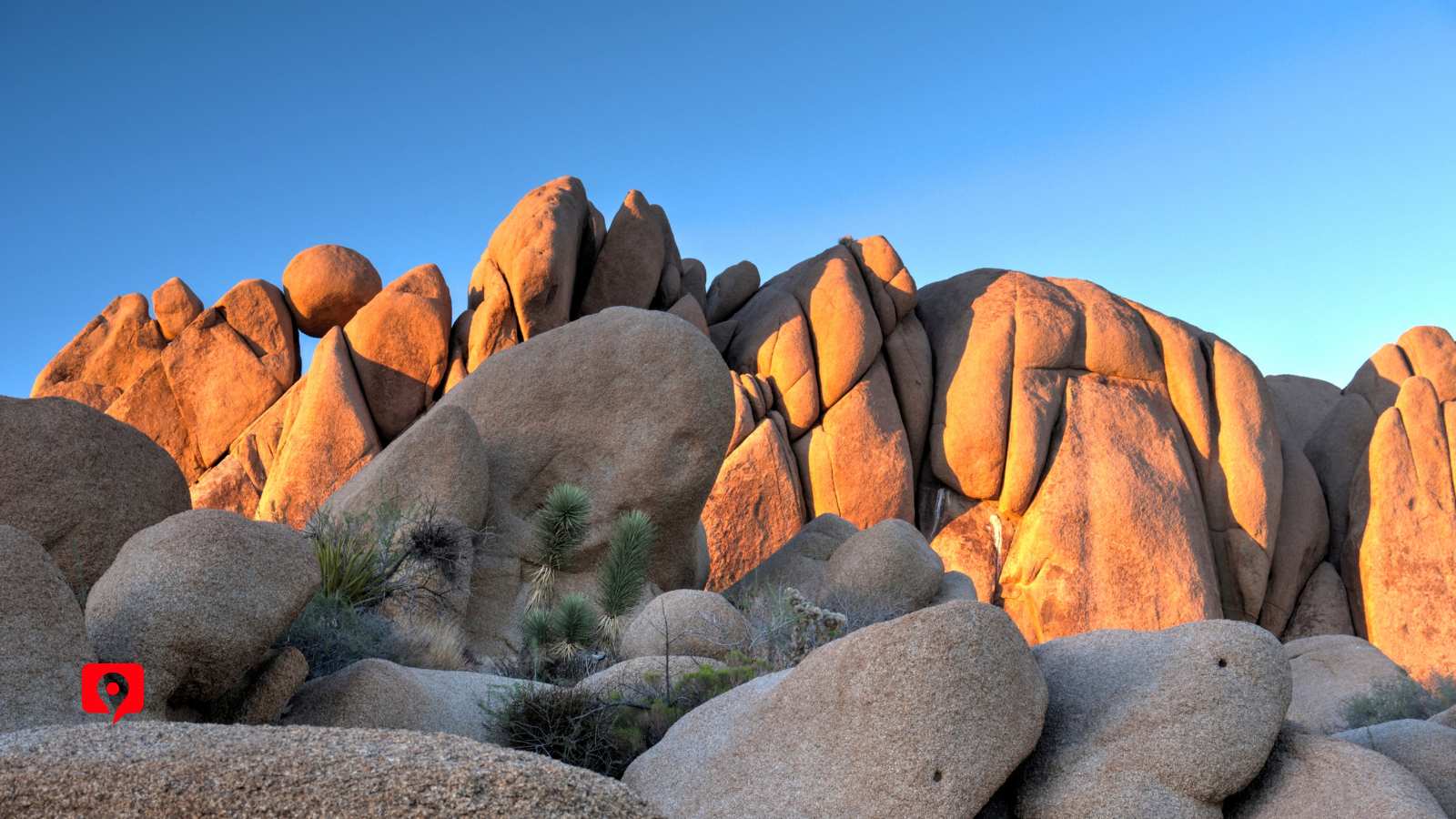
The Hidden Valley Nature Trail in Joshua Tree National Park is a remarkable showcase of natural beauty intertwined with intriguing lore. This trail, easily navigable via a one-mile loop, traverses a landscape rich with the park’s iconic Joshua trees, vibrant yuccas, and monumental boulders. Historically, this secluded valley is rumored to have served as a covert retreat for cattle rustlers, adding a layer of mystique to its striking scenery.
Plan to spend one to two hours exploring this trail to fully appreciate the distinctive rock formations and the panoramic desert vistas it offers. For visitors who relish a leisurely pace, the trail provides ample opportunity to deepen their experience. Engage in photography during the magical hours of sunrise or sunset when the light casts a golden glow over the desert, enhancing its stark beauty.
Alternatively, enjoy a peaceful picnic or simply bask in the tranquil atmosphere of the desert, allowing the serene environment to envelop you. This trail offers a perfect blend of adventure and relaxation, ideal for those looking to explore the essence of Joshua Tree’s remarkable landscape.
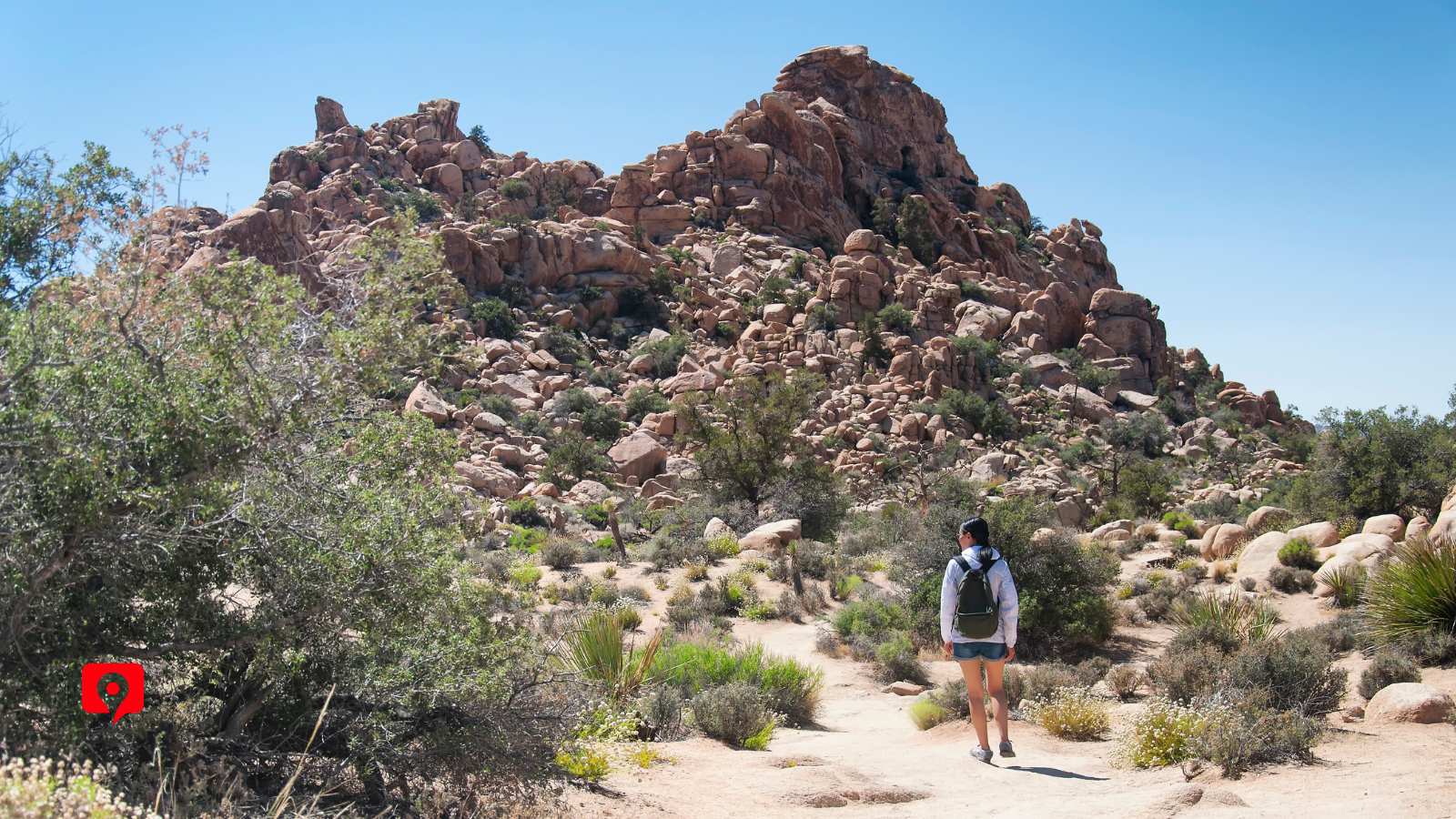
To avoid crowds at Hidden Valley Nature Trail, it’s best to visit on weekdays and avoid holiday weekends when visitors from nearby cities flood the area. Arriving early, particularly before 9 a.m. during peak season, helps secure parking and experience quieter moments. Sunsets draw crowds, so expect evening traffic.
The busiest periods are spring, particularly during wildflower season, and winter holidays from Thanksgiving through Presidents’ Day. As the park has limited roads, most visitors end up at the same popular spots. To escape the crowds, consider hiking into the backcountry. For those looking for an even more secluded experience, backcountry camping is an option. Ensure you are well-prepared, register with the park service, and carry all necessary supplies, including ample water, for safe and responsible wilderness exploration.
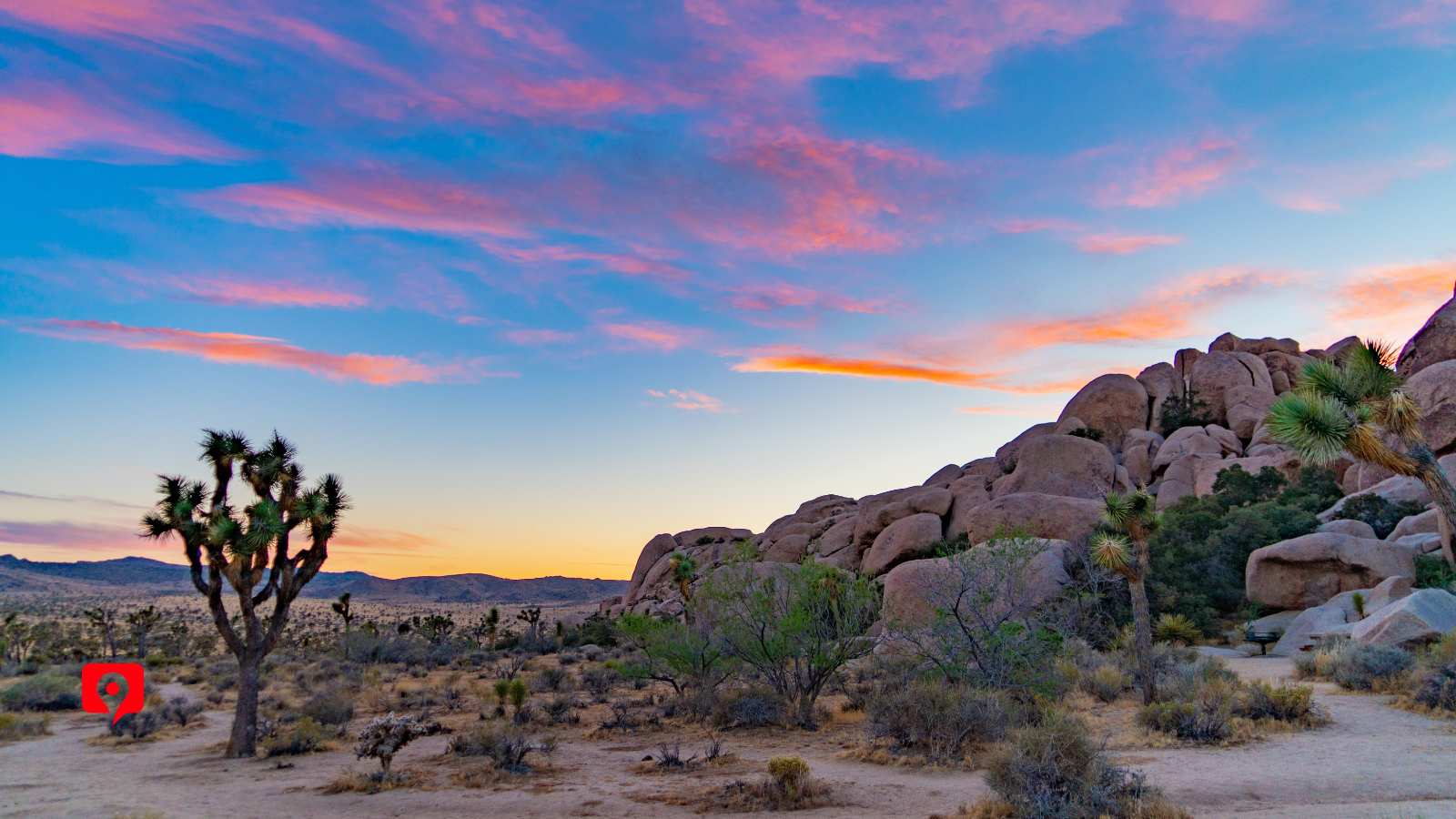
Nolinas
Nolinas, often mistaken for yuccas, are hardy shrubs with long, thin green leaves that thrive in tough conditions. The Cahuilla tribe called them “bear grass,” possibly due to their strength or size. Known for their resilience, nolinas remain green even during droughts or after fires. Their stems survive burning, allowing them to sprout new leaves. In spring, nolinas bloom with cream-colored flowers resembling popcorn. Native tribes like the Cahuilla used to roast their stalks, seeds, and flowers as food.
Chasm of Doom
The Chasm of Doom is a narrow, rocky slot canyon known for its steep, rugged terrain and dramatic rock formations. It offers an exhilarating experience for adventurers, especially hikers and climbers, who navigate through its tight passageways and towering cliffs. The deep shadows and narrow walls create an eerie atmosphere, heightening the sense of mystery. The name itself evokes a sense of danger and excitement, adding to the challenge and allure of this striking natural feature, making it a memorable destination for those seeking adventure.
Wildlife Watching
Hidden Valley Nature Trail offers an opportunity to observe diverse wildlife, from the stealthy movements of foxes to the rustling of chipmunks in the underbrush. Bring your binoculars to better see the high-flying hawks or the elusive bobcats. It’s important to maintain a respectful distance, as the trail winds through habitats critical to these animals. Be especially vigilant at dawn and dusk when wildlife is most active, and you might spot some of the more shy creatures.
Rock Climbing
Hidden Valley’s unique geology provides fantastic rock climbing opportunities, suitable for climbers of all skill levels. The area’s giant boulders and rock faces, formed from millennia of erosion and geological activity, offer a variety of routes that challenge both beginners and advanced climbers. Remember to check for any park regulations regarding climbing and always prioritize safety by wearing appropriate gear and possibly hiring a guide if you are new to the sport.
Sunrise or Sunset Hikes
Experiencing a sunrise or sunset while on Hidden Valley Nature Trail is highly recommended. The changing light paints the landscape in extraordinary colors, highlighting the majestic beauty of the area. These times not only provide phenomenal photography opportunities but also a chance to enjoy the quieter, more serene moments of the day. The cooler temperatures at these times are ideal for hiking, making it a perfect way to start or end your day in nature.
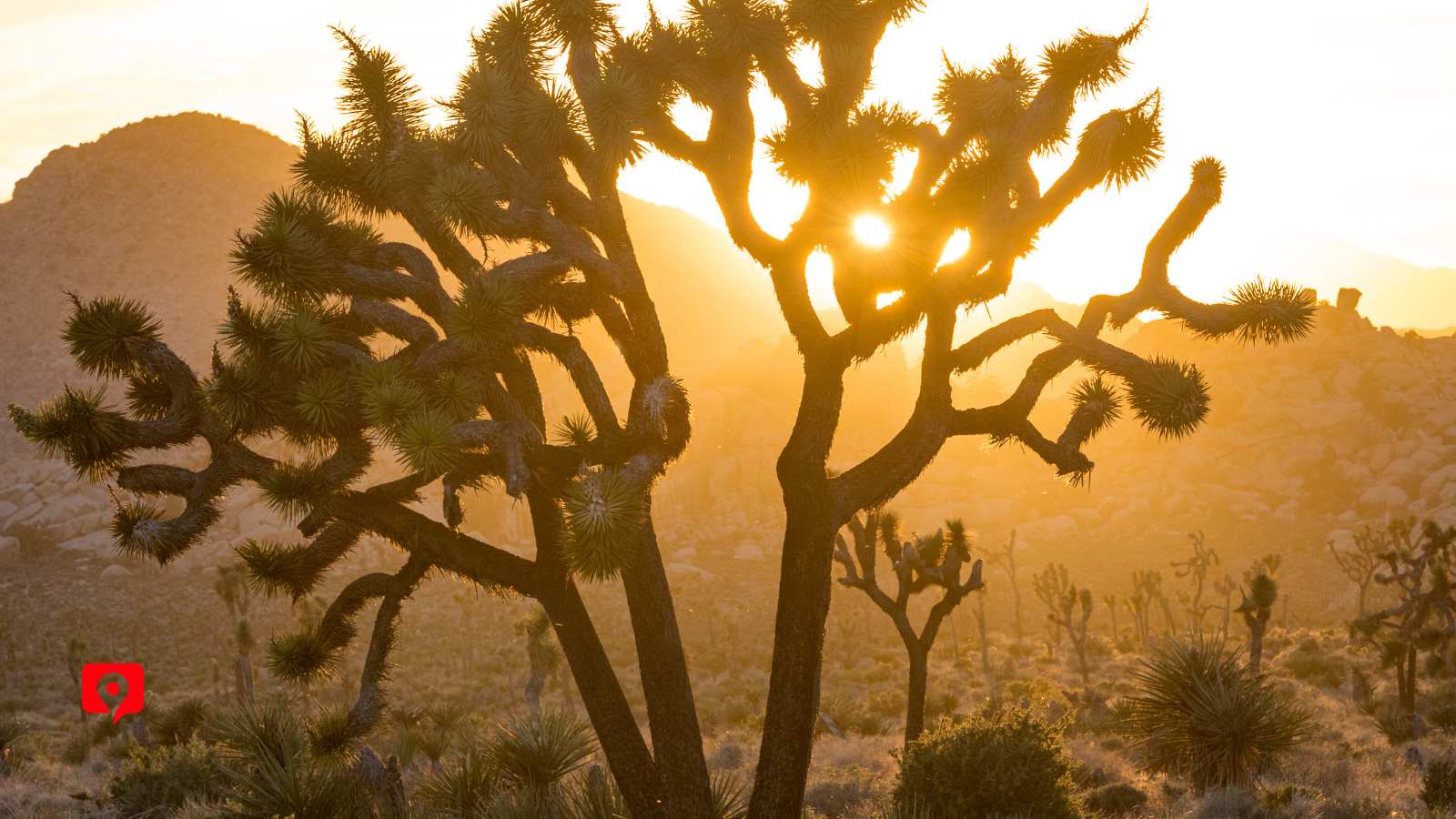
Extra Layers: Desert temperatures can vary considerably. It’s best to prepare for extremes (windier, drier, hotter, and colder than expected), so dressing in layers is the key to staying comfortable. A fleece and a lightweight jacket should do the trick.
Footwear: Grippy soles are best. A good pair of trail runners or lightweight hiking boots are an excellent choice for exploring most trails. Don’t make the mistake of wearing flip-flops or open-toed sandals, however; there are plenty of prickly plants and animals around, so keep those feet protected.
Daypack: A comfortable pack makes all the difference. In addition to carrying an extra layer, water, and headlamp, it’s a good idea to throw a few snacks in there as well.
Portable Phone Charger and Cable: If you’re taking pictures with your phone, running out of batteries may result in missed opportunities. A DC car charger is best, so that you can charge your phone while driving.
First Aid Kit: Ibuprofen, different sized band-aids, antiseptic ointment, tweezers or knife (for removing cactus spines), medical adhesive tape, emergency whistle, and an EpiPen if you are allergic to bees (Joshua Tree has a high rate of bee stings).
Water Bottles: There is no water in the park. Always bring your own, and make sure you drink it! No matter what time of year you visit, dehydration is always a risk – even if you’re not doing much physical activity. It’s recommended that you drink at minimum one gallon a day, but always bring more than you think you need. Electrolyte tablets are excellent – not only do they add some flavor, but they also replenish the natural salts lost when you sweat.
Hiking Poles: Light-weight hiking poles are like having a third leg. They help maintain balance and can get you into a rhythm while walking.
Headlamp: You never know when a hike is going to take longer than planned – we always throw a lightweight headlamp in our daypack just in case.
Sun Protection: This essential includes a broad-brimmed hat, sunblock, and sunglasses.
Plastic Bag: We always carry a plastic bag, so we can do our part and help keep the beaches and waterways clean. If you see some trash along the way, pick it up, drop it in the bag. When you get back to the parking lot, simply drop your bag in the recycling or trash bin and voila! You’ve helped keep the area beautiful for everyone who visits.
Please fill out this form and let us know
17 Mile Drive Acadia Alberta Arches ARIZONA AUSTRALIA Badlands Banff Kamploos Big Bend National Park Big Island Big Sky Drive Big Sur Black Canyon Black Hills Blue Lagoon Bryce Canyon CALIFORNIA CANADA Canadian Rockies Canyonlands Capitol Reef Catskills COLORADO Crater Lake Cuyahoga Valley Death Valley Delicate Arch Everglades FLORIDA Florida Keys Glacier Grand Canyon Grand Prismatic Grand Teton Haleakala HAWAII Hidden Valley Hikes Honolulu Iceland Iceland Golden Circle Itineraries Joshua Tree Kauai Lake Tahoe Lassen Volcanic Lodging Louisiana MAINE Maui MICHIGAN Montana Monument Valley Mount Lemmon Mount Rainier Mount Rushmore National Park NEVADA New Mexico New River Gorge NEW YORK NORTH CAROLINA North Cascades North Dakota Oahu Ohio Old Faithful Ontario OREGON Point Reyes Redwood Reykjanes Peninsula Rocky Mountain Route 66 Saguaro Santa Fe Sedona Smokies Snæfellsnes Peninsula Sonoma And Napa Valley SOUTH DAKOTA Tech Tips TENNESSEE Texas Theodore Roosevelt Travel Tips Trip Planners USA UTAH Videos Waikiki WASHINGTON West Thumb West Virginia White Sands Wildlife WYOMING Yellowstone Yosemite Zion
